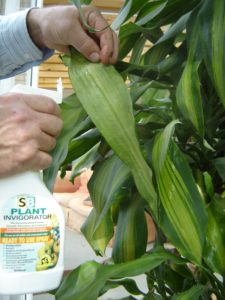2 June 2019
Controlling Mealy Bug in my conservatory

Mealy Bugs are soft bodied, pink / grey in colour and about 5mm long. They are covered with white waxy threads and a waxy covering. Mealy Bugs feed by sucking the sap from the plant, so they will normally be found on the stems or leaf joints although they will attack leaves causing them to yellow. The insect extracts large amounts of sap with the excess sap being excreted as honeydew causing a sticky deposit on the lower leaves. In time, sooty mould grows on the honeydew resulting in an unpleasant mess. Another sure sign of a mealy bug infestation is “white wool” developing on the plant leaves and stems. This is where the eggs are laid. The female is flightless, only the young nymphs are active and search out new feeding sites by crawling from plant to plant. As the nymphs mature they become less active and settle down to feed. The life cycle can take up to 13 weeks at 18°C/66°F. As the adults are flightless the pest must initially be brought in on infected plants and once it established it is very difficult to eradicate.
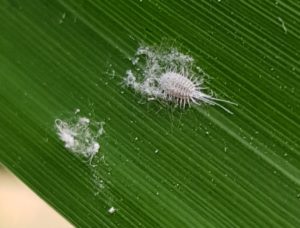
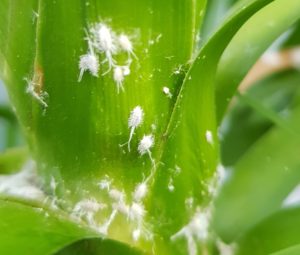
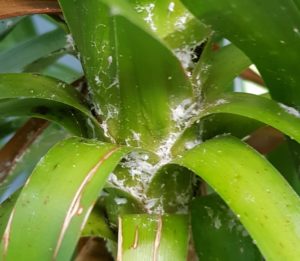
Control mealy bug in your greenhouse or conservatory by introducing Cryptolaemus Larvae AS SOON as you see mealy bug and the temp is 16°C/61°F. Place the Cryptolaemus larvae directly onto the infected plants near the mealy bugs – these larvae are easy to handle.
The Cryptolaemus Larvae (which look very similar to Mealy Bug) feed on the mealy bug before turning into the adult Cryptolaemus ladybirds, which in turn will breed leading to the next generation of Cryptolaemus Larvae. They are delivered in tubes by 1st class post and will fit through the letterbox. The female cryptolaemus then lays her eggs next to the Mealy bug eggs in the “white wool” egg pouches and the whole process is repeated. All stages of the Cryptolaemus eat Mealy Bugs and their eggs. Unlike the Mealy Bug the Cryptolaemus can fly and in very efficient in searching out the Mealy bugs. Cryptolaemus requires both heat and light, so introduce them when the temperature is 16°C/61°F and use artificial light if it is early in the season. N.B. If mealybug is present and the temperature is below 16°C, control the mealy bug with SB Invigorator until the temperatures are high enough – this chemical-free spray will allow you to keep the mealy bug under-control and then once temperatures are high enough it will be safe to introduce the Cryptolaemus.
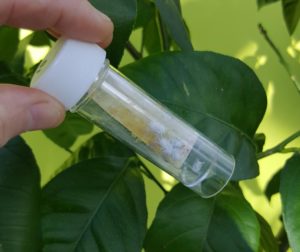
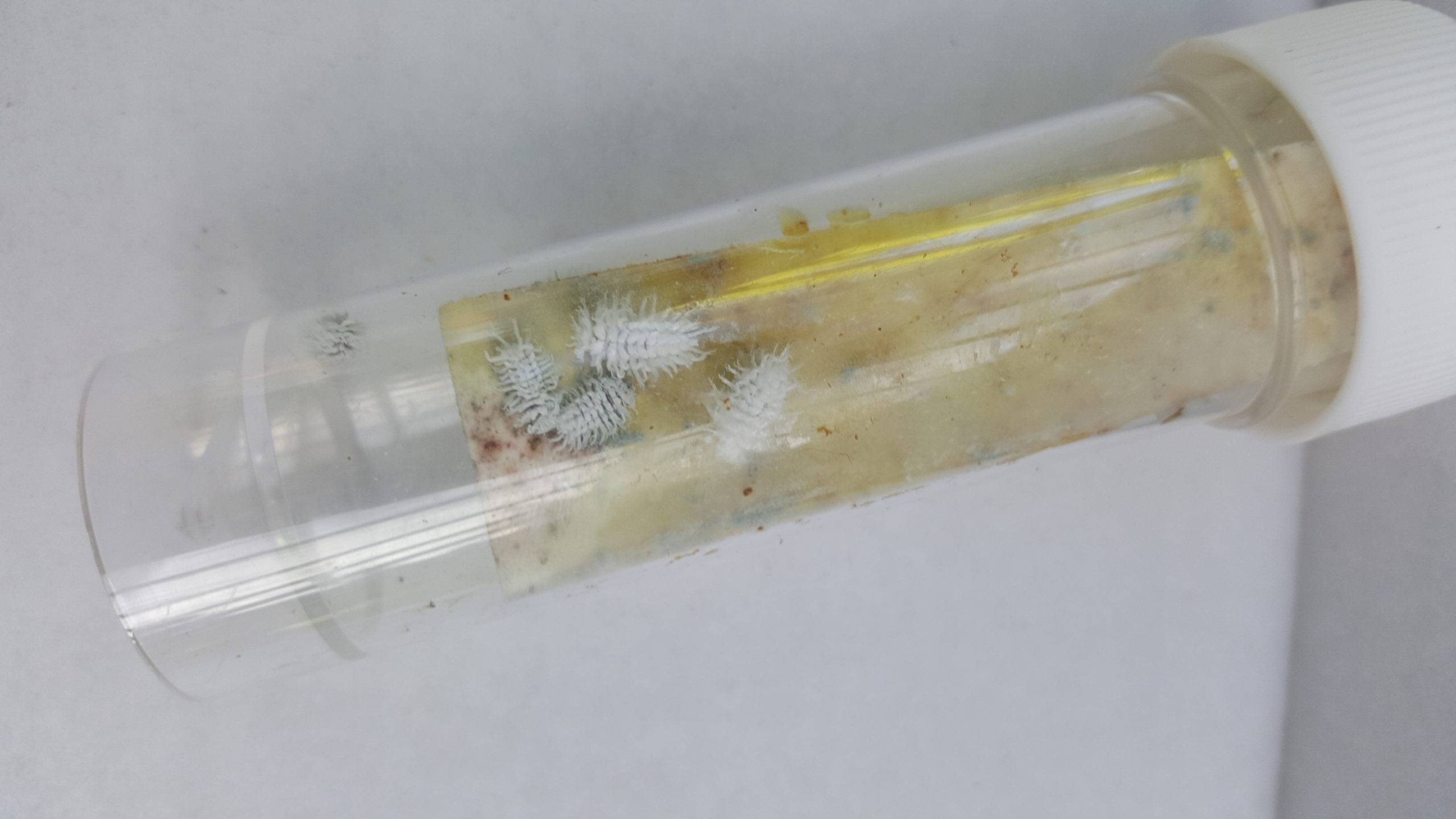
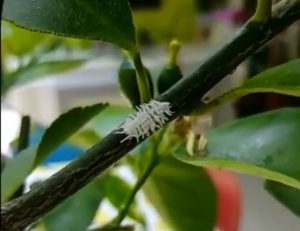
How many Cryptolaemus Larvae do you need :-
- For a small greenhouse where the mealy bug have just appeared – use 1 introduction of 10 Cryptolaemus Larvae.
- For larger greenhouses or where Mealy Bug numbers are higher – use more Cryptolaemus Larvae.
- If the infestation is very heavy, spray with SB Invigorator 1st and then introduce Cryptolaemus – see our Emergency Pest Pack (SB Invigorator followed by Cryptolaemus Larvae).
N.B. Cryptolaemus Larvae are very sensitive to chemical sprays, so if you have recently used a chemical spray i.e. within the last 2-3 weeks, please contact us (jess@greengardener.co.uk) to check how soon Cryptolaemus Larvae can be introduced?
TO FIND OUT MORE ABOUT CONTROLLING MEALY BUG WITH SB INVIGORATOR SPRAY AND / OR CRYPTOLAEMUS LARVAECLICK HERE
SB Invigorator – Use SB Invigorator to save your plants from insect pests i.e. aphids, mealy bug, wooly aphids, scale etc and reduce fungal diseases BOTH underglass and outdoors. This natural spray controls a range of pests in a safe and effective way PLUS it also controls fungal diseases. SB Invigorator should be in your store cupboard ready to :-
- Control pests BEFORE introducing natural controls – Use it to stop pests getting out of control and as there are no harmful chemical residues left behind, beneficial insects can then be introduced i.e. spotted Whitefly? Spray with SB Invigorator and then introduce Encarsia.
- Control any pest hotspots ONCE natural controls have been introduced – Use it to target any pest hotspots as it will not harm beneficial insects once they have been introduced.
- Use for a pest emergency – been away or not noticed a rapid build up of pests such as red spider mite or greenfly? – use it to get control BEFORE introducing beneficial insects.
- Use it to control powdery mildew on cucumbers – some sprays are NOT suitable for controlling powdery mildew on cucumbers, but SB Invigorator is safe to use. Simply spray weekly to keep it under control.
- Control pests during the autumn and winter when it is too cold to use beneficial insects i.e. in unheated greenhouses / conservatories – There are no harmful chemical residues left behind, so beneficial insects can be introduced AS SOON as the temperatures are warm enough in the spring.
